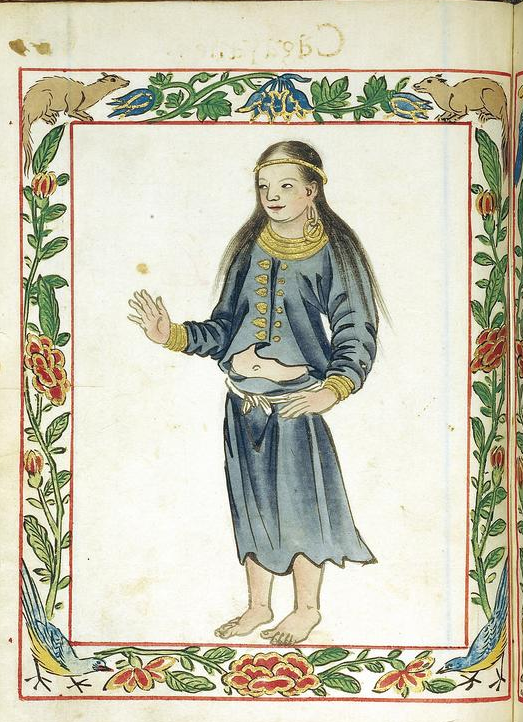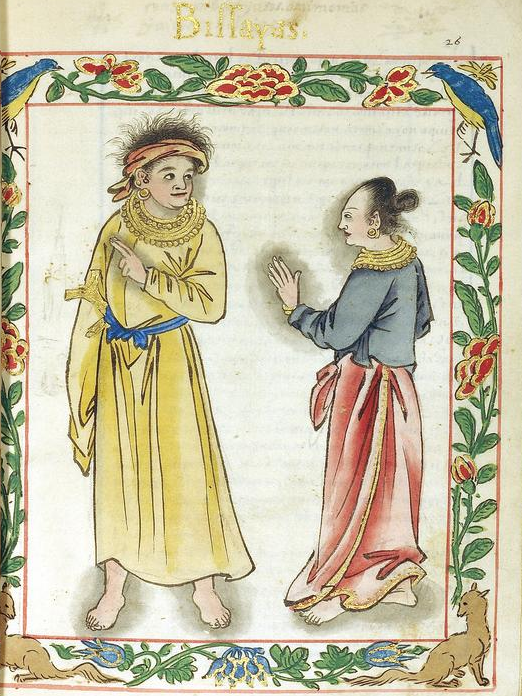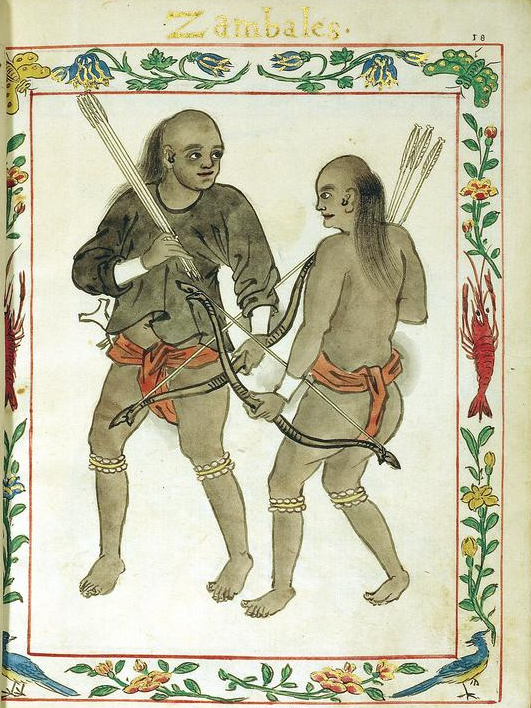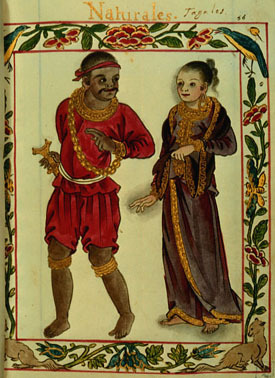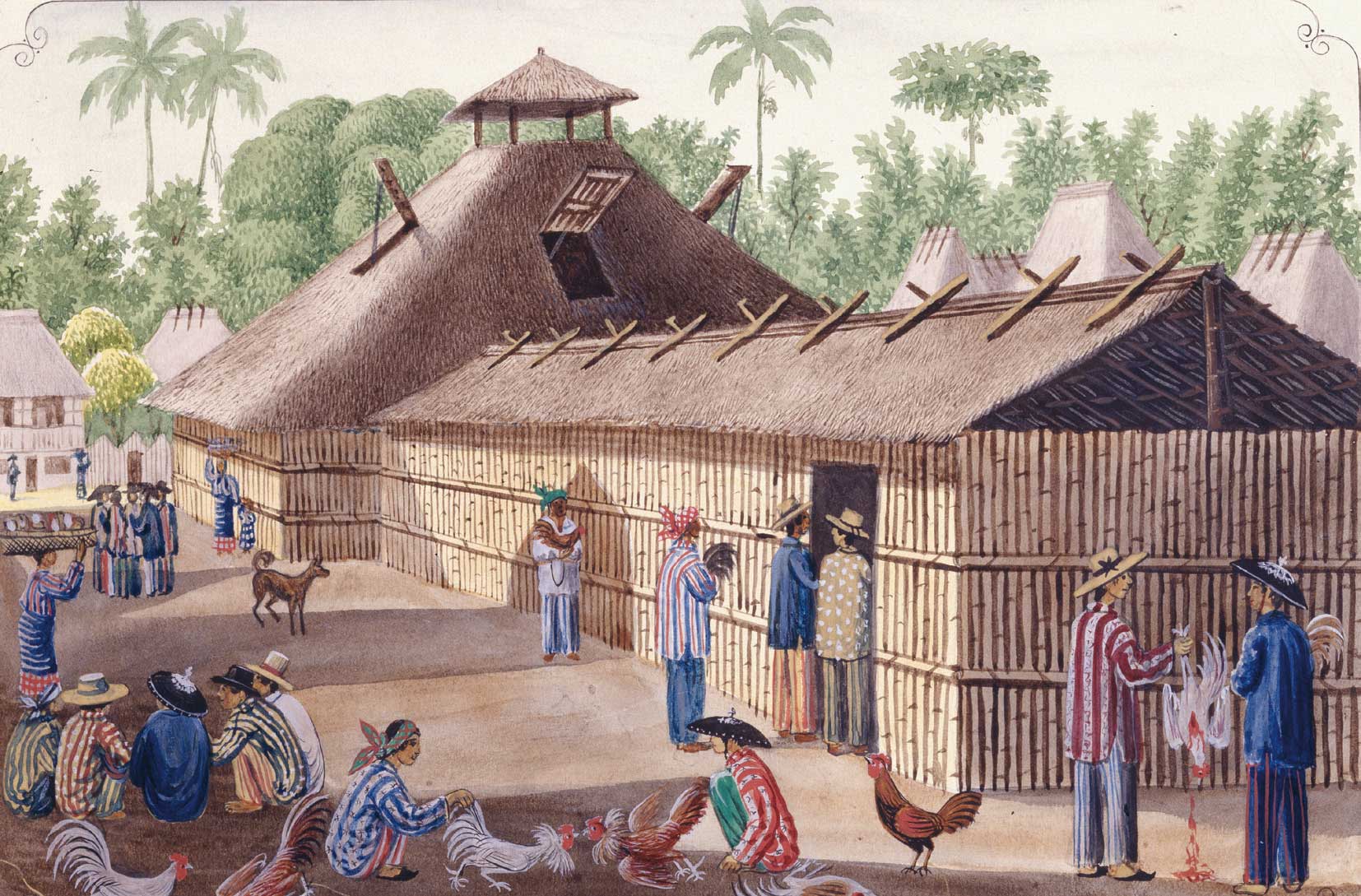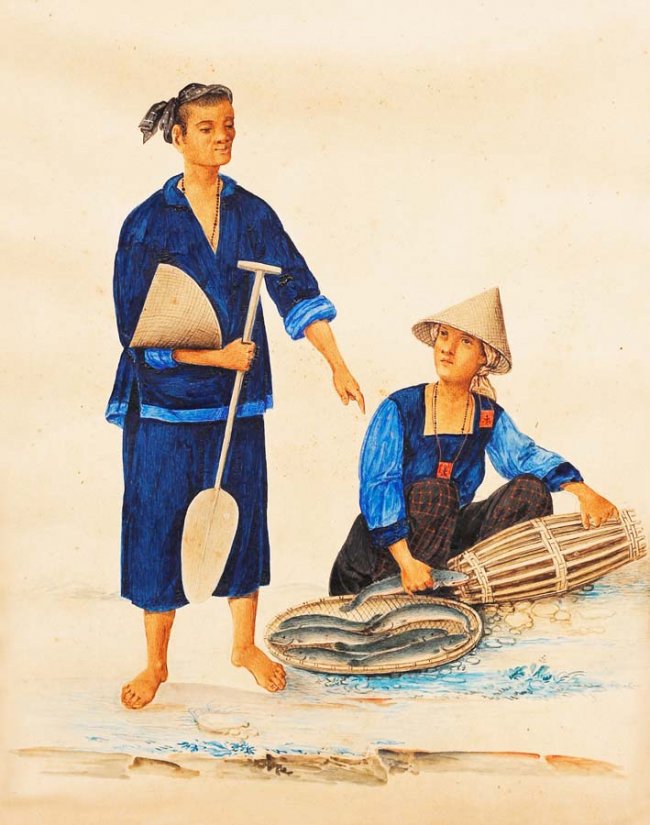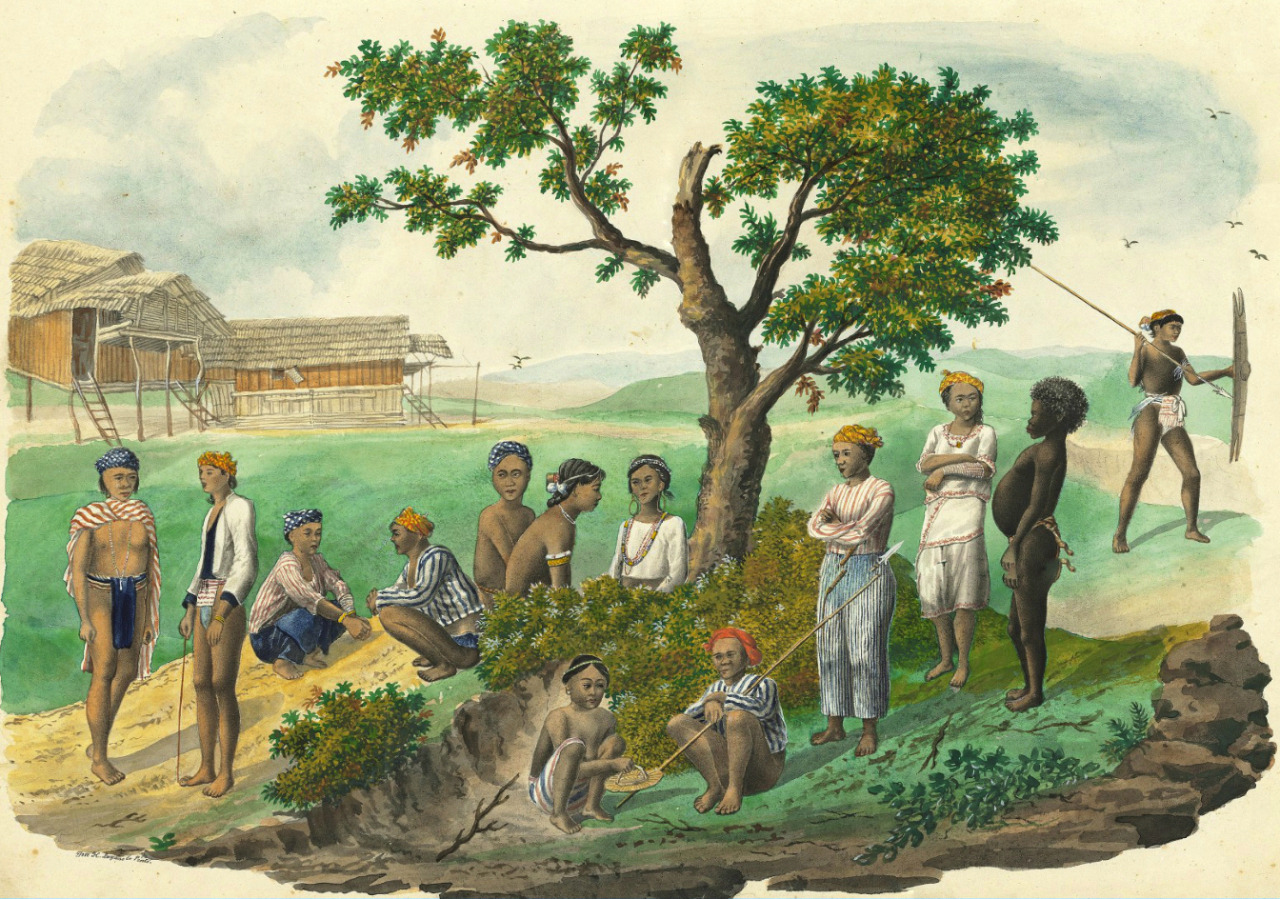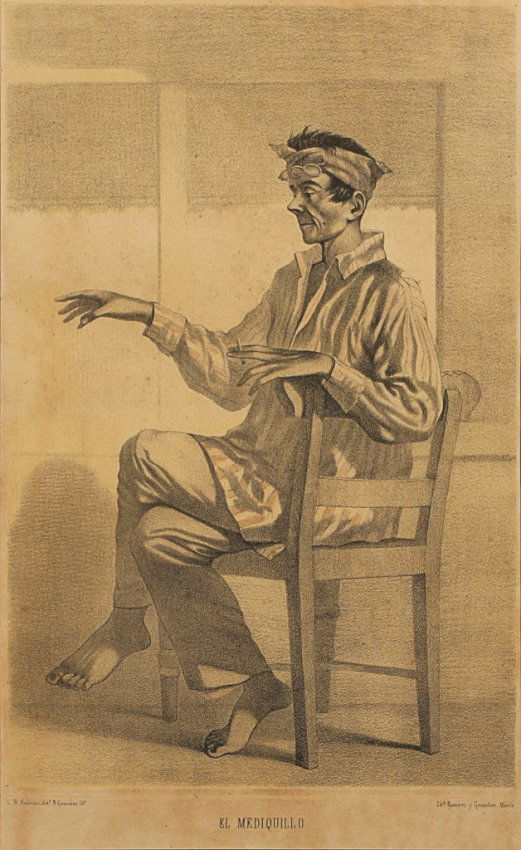Discuss, post, things relating to pre-Hispanic Philippine practices of beautification and fashion.
Several years ago I saw a documentary about the vanishing Lumad teeth filing and blackening tradition...and I connected it to several accounts I read prior in Spanish accounts and textbooks (eg Scott's). This is the video I will add the accounts written by the Spanish on it.
Blaans are the last to keep this tradition...
...but most likely this was widespread in the archipelago 500 years ago.
Pigafetta
"Their teeth are red and black, for they think that is most beautiful."
Unnamed author/undated, attributed by Pastells to Bobadilla, 1640's (from "Relation of the Filipinas Islands by a religious who lived there for eighteen years')
"In regard to their teeth, they imitate the men in everything. They file them from their earliest childhood; some making them even in this way, others filing them into points, thus giving them the appearance of a saw. They cover the teeth with a black, glossy polish, or one that is flame-colored; and thus their teeth become black, or as red as vermilion. In [288]the upper row, they make a little covering which they fill with gold, which shows off to advantage on the black or red background of that polish."
Aduarte 1640 ("Historia de la Provincia...")
"When they reminded him that he did not resist, he answered that he could not
endure the sight of "those barbarians with white teeth." He called
the religious "barbarians," because of their little knowledge of
the language at the beginning;[B] and he spoke of their white teeth
because the Indians regard this as a blemish, and make their own teeth
black[/B]."
Chirino
"Their ornamenting the teeth is also worth notice, although it is a barbarous practice to
deprive them of their natural whiteness, which God conferred upon the
teeth for the beauty of man. On the other hand, they showed themselves
to be both skilful and prudent in trying to maintain them as necessary
instruments for the preservation of health and life. They are thus
very diligent in rinsing out their mouths and cleansing their teeth
after eating, and upon arising in the morning. For the same purpose
they treat and adorn their teeth in the following way: [B]From early
childhood they file and sharpen them, [44] either leaving them uniform
or fashioning them all to a point, like a saw--although this latter
is not practiced by the more elegant. They all cover their teeth with
a varnish, either lustrous black or bright red--with the result that
the teeth remain as black as jet, or red as vermilion or ruby. From
the edge to the middle of the tooth they neatly bore a hole, which
they afterward fill with gold, so that this drop or point of gold
remains as a shining spot in the middle of the black tooth.[/B] This
seems to them most beautiful, and to us does not appear ugly."
de Morga ("Sucesos de...")
"All are very careful of their teeth, which from a very early age they file and render even,
with stones and iron. [227] They dye them a black color, which is
lasting, and which preserves their teeth until they are very old,
although it is ugly to look at."
Colin
"[B]Their greatest anxiety and care was the mouth, and
from infancy they polished and filed the teeth so that they might
be even and pretty. They covered them with a coating of black ink or
varnish which aided in preserving them[/B]. Among the influential people,
especially the women, it was the custom to set some of the teeth most
skilfully with gold which could not fall out, and gave a beautiful
appearance."
San Antonio ("Cronicas de..." est. 1720)
"The teeth are even and fine; formerly they
covered them with ink or a varnish of a black color. Now that is no
longer used except among the Tagabalooyes of Caraga, of whom I have
written..."
Scott ("Barangay...") (page 18-19 "Decorative Dentistry")
[url] https://books.google.com/books?id=15KZU-yMuisC&printsec=frontcover&dq=Barangay:+Sixteenth-century+Philippine+Culture+and+Society&hl=en&sa=X&ved=0ahUKEwj8tZWcgeDLAhXKtYMKHeFZBr0Q6AEIHTAA#v=on epage&q=Barangay%3A%20Sixteenth-century%20Philippine%20Culture%20and%20Society&f=false[/url]
Zumbroich and Salvador-Amores (2009) "When Black Teeth Were Beautiful: The History and Ethnography of Dental Modifications in Luzon, Philippines" (pg. 125-156)
[url] https://www.academia.edu/7608214/When_black_teeth_were_beautiful_-_the_history_and_ethnography_of_dental_modifications_in_Luzon_Philippines [/url]
Or this (more direct)
[url] https://www.academia.edu/7612056/Gold_work_filing_and_blackened_teeth_Dental_modifications_in_Luzon [/url]
"There were two different causes for the ‘vermillion’ coloured teeth (Chirino 1604, 187) readily observed amongst indigenous people. Betel chewing was common in coastal and lowland areas as well as parts of the Cordillera (Morga 1609, 97-99; Aduarte 1640, XXXI, 34) 11 and had the effect that ‘the saliva and all the mouth are made as red as blood’ (Morga 1609, 98). After a number of years, the addictive habit could leave the teeth of a chewer with a distinct reddish-brown stain (Fig. 4). In an unusual custom, some people of the lowlands also specifically dyed their teeth red with small pieces oflacha (Tagalog) or lakhá’ (Bikol). 12
This was a foreign product for sale in the trade district of Tondo in Manila. According to Marcos de Lisboa it was imported from China, whereas Pedro de San Buenaventura had it coming from, though in reality more likely through Borneo. Both authors must have been referring to lac, the scarlet resinous secretion of a scale insect (often Kerrialacca Kerr, Coccoideae).13 Application to the teeth might have required heating or diluting the brittle resin, though the sources are silent about the exact process involved. All these different ways of purposefully interfering with the God-given shape and whiteness of teeth were in Spanish eyes a ‘barbarous practice’ (Chirino 1604, 186) that fell outside the Catholic norms of behaviour. ‘Whoever files his teeth, I will surely punish’, was a pointed gloss given by Pedro de San Buenaventura in his
Vocabulario (1613, 390). With increasing influence by Christian missionaries in the lowlands of central and southern Luzon, teeth filing and dyeing (but not betel chewing) began to be displaced during the seventeenth century to be broadly abandoned by the early eighteenth century (San Antonio 1738, 327)"

